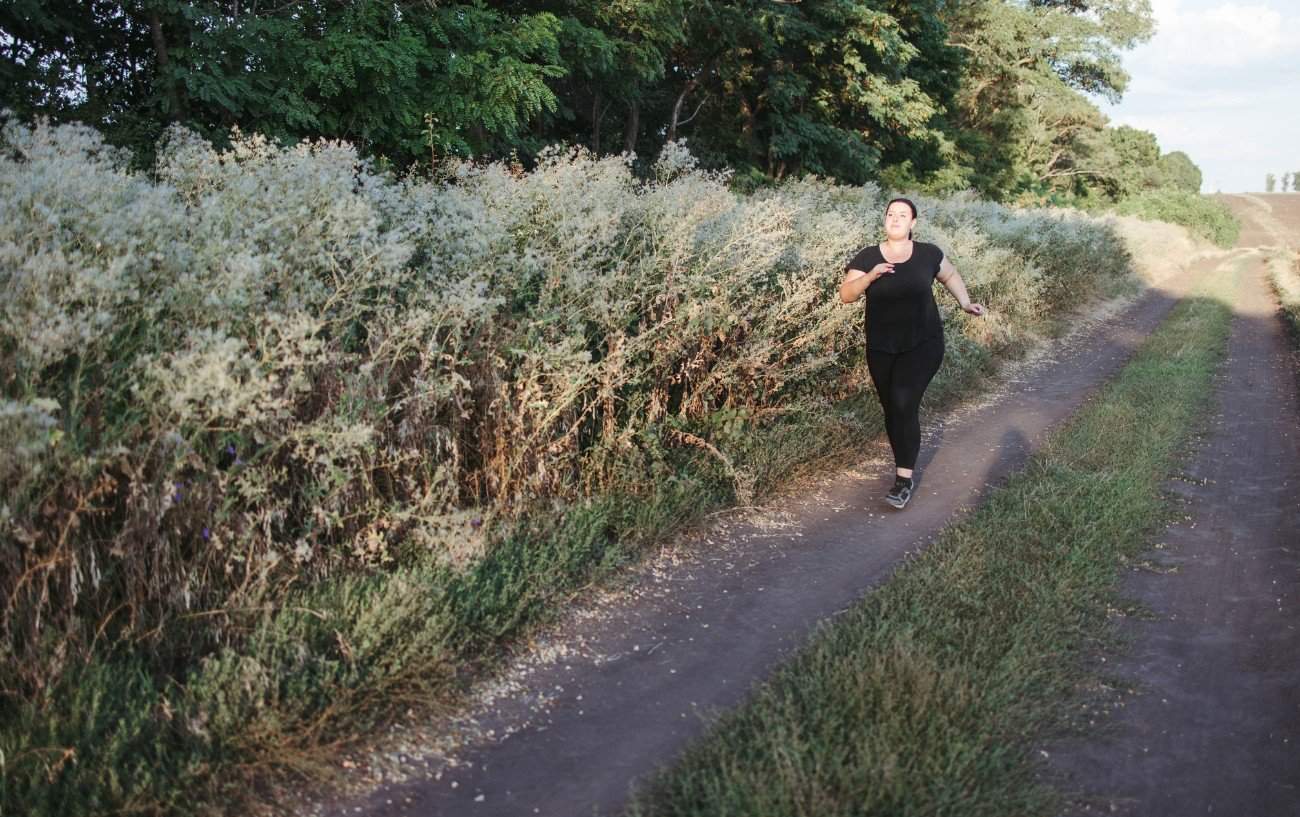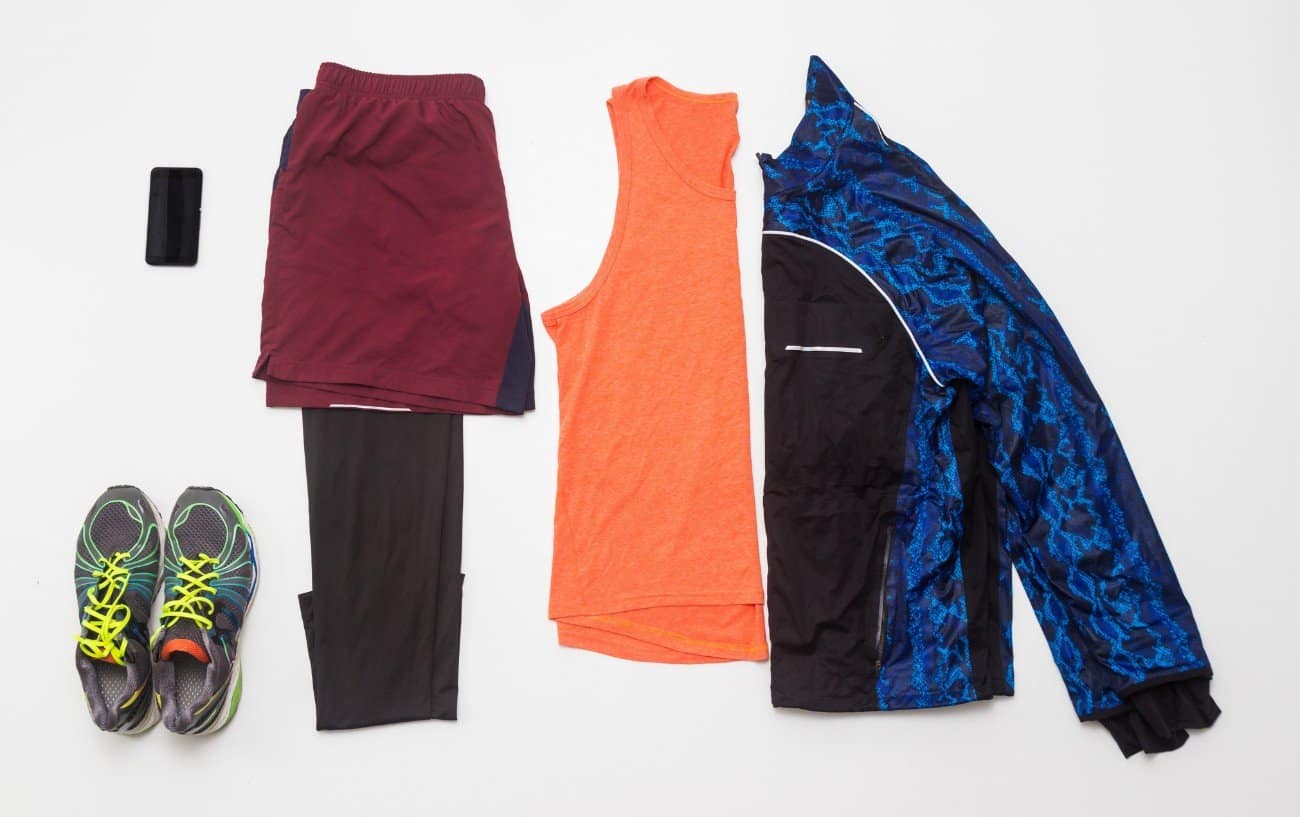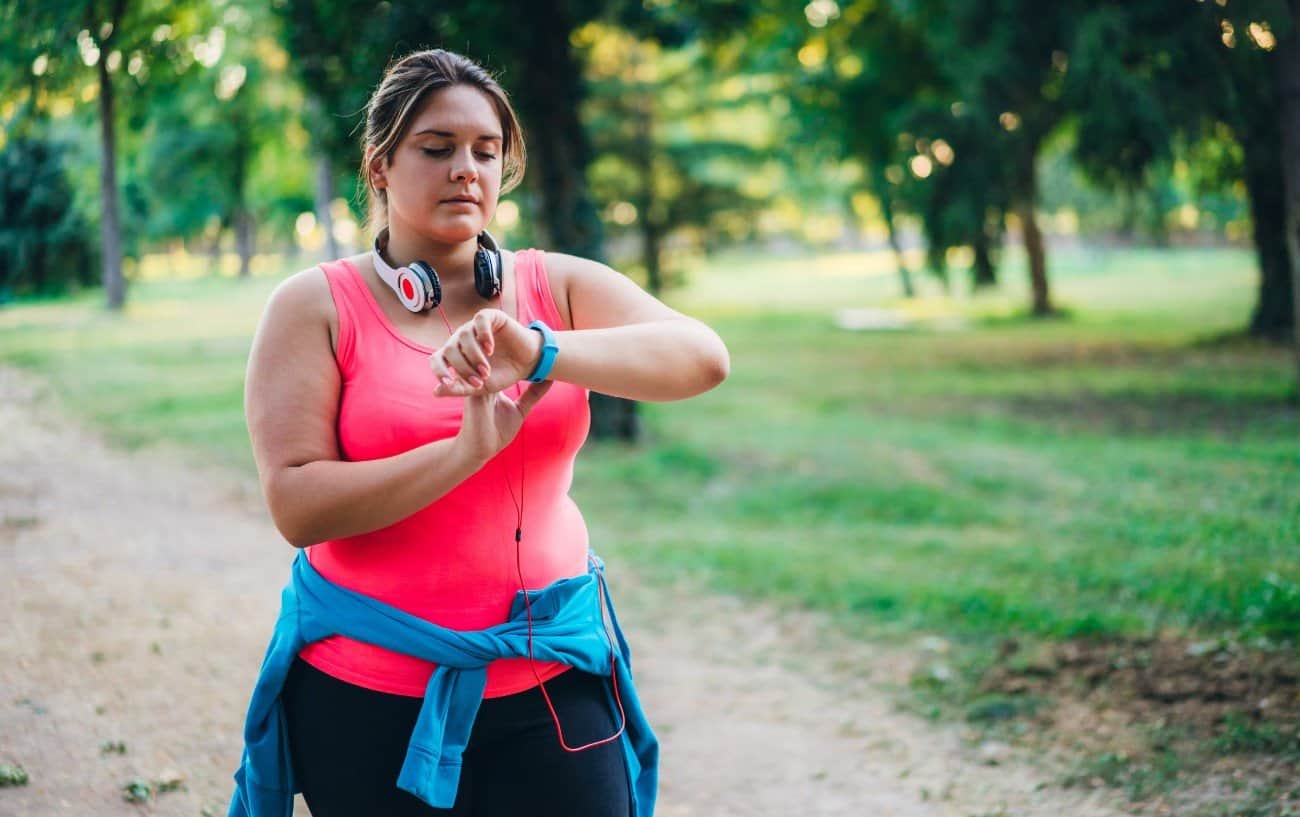One of the best things about running as a sport is that it’s “come one, come all.” Although many people think of runners as being tall, lanky, sinewy athletes, runners come in all shapes and sizes.
If you’re clinically considered overweight, starting running can feel daunting, but not only are there many great physical and mental health benefits to be gained by committing and taking that first step of your first run, but you can also absolutely do it.
Starting running can be difficult for anyone, and there are special considerations for how to start running when overweight to ease the process, minimize your risk of injury, and help you fall in love with the sport even as you navigate the challenges of building stamina as a runner and getting in shape.
We applaud anyone who decides to take up running, no matter what age you are, what your exercise history entails, and what your body looks like. You can be a runner.
We are here to support you on your journey. So, if you have a few pounds to lose, keep reading for our guide on how to start running when overweight and get ready to love what your body can do.
We will cover:
- Can I Run If I’m Overweight?
- Before You Start Running When Overweight
- How to Start Running When Overweight
- Tips On How To Start Running When Overweight
Let’s get started!

Can I Run If I’m Overweight?
Absolutely! Overweight individuals can absolutely be runners and should never let naysayers, self-consciousness, or self-doubt try to tell them otherwise. The important question isn’t if you can, but how to start running when overweight.
If you are morbidly obese and have pre-existing medical conditions and musculoskeletal discomforts, it’s advisable to start with walking to build some fitness, kickstart some weight loss, and prepare your body for the demands of running. But be patient; you’ll get there!
Related Article: The Best Under Desk Treadmills To Keep You Active In The Office
Before You Start Running When Overweight
Preparation is part of having a successful start with running. Before you head out for your first run, make sure you’ve done the following:
#1: Consult Your Doctor
If you’re carrying extra weight, it’s a good idea to see your doctor before you start running for a thorough check-up. Discuss your interest in running so that your doctor can check your heart, lungs, and blood pressure and give you medical clearance before your first workout.
Your doctor might require an exercise stress test, and provide guidance about managing any pre-existing conditions, injuries, and medications in your medical history in the context of starting running.

#2: Get Yourself Proper Running Shoes
The other important step before you start running is to get the right gear. Many people think it’s fine to start running in old tennis shoes or sneakers you’d wear to the gym, but this is not a good idea, particularly if you are overweight.
Old sneakers and athletic shoes that aren’t designed for running lack the support and cushioning you need to minimize injury risk. One of the few heightened concerns for overweight runners is the increased risk of joint pain, so buying the right footwear before you start running when overweight is essential.
Proper running shoes that fit you well and support your feet in a way that optimizes the biomechanics of your body will help ensure impact stresses are placed on appropriate physiological structures to reduce the risk of injury.
It’s a good idea to visit your local running store where a shoe expert can analyze your gait and recommend the best shoes for your body. There are also shoe considerations for overweight runners.
For example, some overweight runners prefer to run in a more cushioned shoe to help absorb the impact, while others need a more supportive shoe or an orthotic or insole to ensure the arch of the foot doesn’t collapse when you land.

#3 Dress Like a Runner
It is also helpful to get running clothes. Performance apparel is made from moisture-wicking materials, so it will keep you cooler, drier, and more comfortable than heavy cotton clothing.
Of course, it’s perfectly fine to start out in any gym clothing or leisurewear you already have lying around, but running clothes will not only help you look the part, but they will also help you feel more comfortable and avoid chafing.
For example, if you’re running outside in cold weather, sweatpants or yoga pants will suffice, but if you have the means, buying some running tights or breathable running pants will probably feel much better.
The fabrics are designed to regulate your temperature and resist wind and moisture, while the fit or cut minimizes restriction, excessive flapping as you run, and most importantly, skin rubbing and chafing.
Depending on the climate in which you live and the season, you’ll want running shorts, tights or running pants, moisture-wicking tops (with short sleeves and long sleeves), performance socks rather than cotton socks, and accessories like a winter hat, running gloves, and a running jacket or vest.

Compression gear can be helpful for overweight runners, as it can provide more support, minimize tissue bouncing, and cut down on chafing. You might want a base layer of compression shorts and a compression top with a looser layer on top.
If you are a woman, you’ll also need to invest in a high-quality sports bra. Sports bras not only make running more comfortable by reducing bouncing, but they also prevent future sagging.
Relates Article: The Best Sports Bras For Running
The only natural support for breasts is skin tissue and weak ligaments referred to as Cooper’s ligaments. The excessive jostling from running sans sports bra can overstretch and damage these ligaments over time.
There are many styles of sports bras for runners. As with running shoes, it’s a good idea to get fitted at your local running shop to find what feels best for your body. A sports bra that doesn’t fit may do little to prevent bouncing or worse, may cause painful chafing.
How to Start Running When Overweight
Truthfully, how to start running when overweight is not much different than how to start running at a smaller body fat percentage or lower BMI: you just have to start. Taking a gradual approach to building up your stamina is sensible, and will be addressed below.
That said, carrying extra weight can make cardiovascular exercise more challenging for your heart and lungs and the impact stresses will be higher on your bones, joints, muscles, and connective tissues, so there are few special considerations for how to start running when overweight as well.
Related: BMI Calculator

#1: Use the Walk/Run Approach
You don’t have to open your front door on day one and run as far as you can. This can be mentally defeating, uncomfortable, and may even cause an injury.
Because running is a high-impact activity, you need to build up and progress slowly. Regardless of your weight, when you’re starting running or returning from an injury or extended time off, a walk/run method is an effective approach to build cardiovascular fitness while getting your bones, joints, muscles, and connective tissues accustomed to the stresses of running.
Essentially, walking breaks give you a chance to catch your breath and slow your heart rate, and because walking is a lower-impact activity, your joints and muscles also get a break.
#2: Follow a Training Plan
Some of the most common questions that people have when they are looking into how to start running when overweight are, “How much should I run?” and “How often should I run?”
Following a training plan for beginners, such as a couch to 5k program, a 30-day running challenge, or a 30-day mile a day challenge. These can give you the guidance and structure you need to safely get started with running.

#3: Examine Your Nutrition
Now that you’re going to be a runner, it’s even more important that you’re nourishing your body with nutritious foods and avoiding processed foods like packaged sweets, excessive sugar, artificial colors and flavors, and hydrogenated oils.
If you’re looking to use running as a means to help you lose weight, consider consulting a registered dietitian or sports nutritionist who can help assess your caloric needs and devise a food plan.
A healthy diet for runners should focus on whole, natural foods like vegetables, fruits, lean protein, legumes, low-fat dairy, seeds, and nuts. Keep in mind portion sizes and the calories you’ll burn running versus your daily caloric needs.
To lose one pound of stored body fat, you have to create a caloric deficit of roughly 3,500 calories, which equates to 500 calories per day per week for a weight loss rate of one pound per week.
This caloric deficit can be generated by consuming fewer calories, burning more calories (such as through your new running routine!), or a combination of both.

#4: Strength Train
Strength training can reduce your risk of injury and build muscle. Increasing your lean body mass will boost your metabolic rate and help your muscles be strong enough to handle the loads and forces from running, which can alleviate undue stresses on your knees, ankles, hips, and bones.
The result? Less joint pain and a more injury-resilient body: win-win.
#5: Strengthen Your Core
A strong core supports proper running form and movement mechanics. Overweight runners are at an increased risk of lower back pain, particularly if they have a larger abdomen.
Core workouts can improve the supportive strength of your abs and lower back muscles to ensure you have a nice upright running form with minimal strain on your lower back.
Tips On How To Start Running When Overweight
Starting running when overweight can pose challenges, as we’ve discussed, so here are a few additional tips:

#1: Use Body Glide
Many beginner runners find out the hard way that friction and sweat in running can lead to some excruciating chafing. Applying a product like Body Glide or Vaseline to areas where your skin rubs together—such as between your thighs and under your arms. This can prevent the monster that is chafing—raw, red, inflamed, and irritated patches of skin.
#2: Use Effort as Your Guide
When you’re overweight, it can feel more difficult to catch your breath when you’re running. The body has to work harder to move more mass from point A to point B. That’s ok!
Listen to your body, and walk or slow down when you need to. Focus on effort not nailing a certain pace.
#3: Don’t Compare Yourself to Others
You are you, and you are fantastic. Don’t worry about what workouts and splits other people are posting. Be proud of your own accomplishments and progress at the pace you need. As they say, “Run your own race.”

#4: Record Your Progress
Keep track of your workouts with a running app or training log so you can note any niggles as they crop up, be on the lookout for signs you need a day off, and have a nice record of your training journey to look back at how far you’ve come.
Are you ready for this exciting journey? We hope that our guide on how to start running when overweight has inspired you to get going and join the awesome club of runners.
If you would like some ideas on how to spruce up your nutrition, take a look at our nutritional guides for runners:
The Complete Runner’s Diet: What To Eat For Top Performance
The Best Popular Diets For Runners: 3 Healthy Choices













